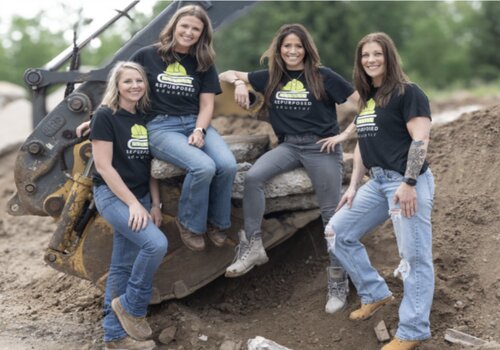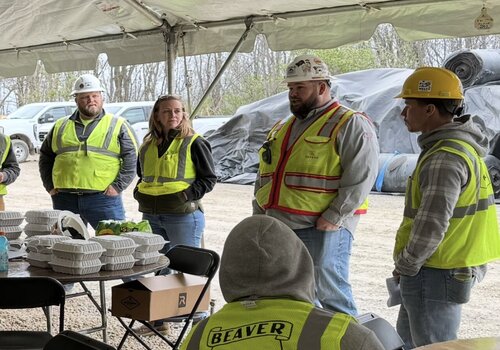If the past few years taught contractors anything, it’s this: resilience beats reactiveness. Material shortages, freight bottlenecks and extreme weather put pressure on budgets and schedules, but they also revealed what works. Here’s a concise playbook of 5 lessons learned and practical, ready-to-apply strategies to keep your jobs moving in 2025 and beyond.
1. WATCH PRICES AND PLAN BUYS LIKE A PRO
Price swings are calmer than the 2021–22 spikes, but volatility hasn’t vanished. Producer prices rose 2.6% year-over-year as of August 2025, with core PPI (less food/energy/trade) up 2.8%. That’s not chaos, but it is enough to erode margins if you’re late on procurement. Build quarterly checkpoints into your project cash flow and lock in buys when your estimates pencil out.
Field tip: Many contractors now “pre-buy” critical items post-award, diversify vendors or specify alternates. These tactics became common during the worst disruptions and still pay off today. In AGC’s 2025 outlook, firms reported accelerating purchases, turning to alternate suppliers and substituting materials to mitigate risk. Consider a standing “A/B vendor” matrix for each major category (concrete, rebar, electrical gear, pipe, etc.) and keep at least one vetted backup.
2. DOUBLE DOWN ON SUPPLIER VETTING (INCLUDING CYBER)
Your jobsite doesn’t just depend on physical deliveries anymore; it runs on data from telematics to e-submittals to cloud schedules. Treat cyber supply chain risk management as part of procurement: require vendors to meet baseline controls, document software bill of materials where relevant (e.g., estimators, fleet systems) and define incident-response expectations in your contracts. NIST’s C-SCRM guidance is a useful, plain-English framework for making this a company-wide discipline rather than an IT-only task.
CISA’s supply-chain essentials reinforce the basics: identify who’s involved, map dependencies beyond first-tier suppliers and monitor risk over the life of the project, not just at award. Put this into a one-page checklist your PMs can use during pre-construction.
3. USE PUBLIC DATA TO ANTICIPATE FREIGHT AND PORT FRICTION
The U.S. Department of Transportation’s FLOW data-sharing effort now covers the majority of container imports. Translation: better visibility on where bottlenecks are forming so you can time orders, consider alternate ports or shift to domestic sources when it makes sense. Make “FLOW trend check” a line item in pre-buy meetings for long-lead imports (switchgear, specialty fixtures).
At the same time, federal investment in ports, inland waterways and resilience corridors, as well as the PROTECT program continues to harden freight infrastructure. Knowing what’s funded in your state can inform realistic lead times and detour plans in your CPM schedules.
4. STANDARDIZE, MODULARIZE, AND PREFABRICATE WHERE YOU CAN
Every SKU you standardize removes a supply-chain dice roll. Consolidate specs on fasteners, conduit fittings, controls, finishes and batteries across projects. Where feasible, move scope into prefab or modular assemblies that shorten on-site exposure to weather and shrink your dependency on late field deliveries.
For concrete and vertical trades, manufacturers are increasingly electrifying equipment lines and pushing connected tools to smooth labor/productivity constraints. Plan for power, charging and storage early so you can actually capitalize on those gains.
5. UPDATE CONTRACT LANGUAGE FOR A VOLATILE WORLD
When scopes or material markets shift, outdated boilerplate is your enemy. Work with counsel to add:
-
Price-adjustment/escrow language tied to neutral indices (e.g., PPI series relevant to your materials).
-
Force majeure + logistics clauses that explicitly address carrier disruptions and port closures.
-
Cyber requirements for vendors supplying software-enabled equipment or services.
Having clear triggers and documentation expectations reduces claims friction and helps everyone focus on solutions. -
PRO TIP: Your pricing guardrails are more defensible if they tie back to BLS series.
THE BOTTOM LINE
Resilient contractors aren’t guessing less; they’re systematizing how they handle uncertainty. That means tying buys to data, spreading supplier risk and hard-wiring cyber and climate resilience into standard procedures. Do that consistently, and you’ll turn the next disruption into a scheduling footnote instead of a headline.
Learn about the latest trends that will impact your business in 2026 at CONEXPO-CON/AGG 2026 in the session Expect the Unexpected: Navigating Macroeconomic Trends in Construction. Register today.
Photo credit: SHUTTERSTOCK/GORODENKOFF












